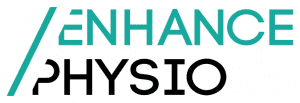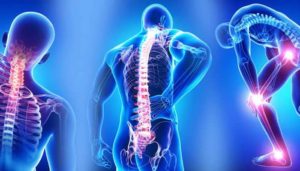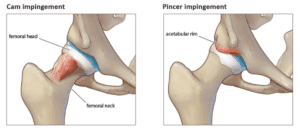DOMS or Delayed onset muscle soreness typically manifests as a dull, aching pain in the affected muscles rather than the joints. Sitting down and getting up from your chair after a heavy session of squats, deadlifts or lunges, for instance, can be a very uncomfortable feeling. This would result from DOMS in the quadriceps, glutes or hamstrings that may be felt after such a session.
There are several ways to treat DOMS, depending on its severity. In mild cases, rest is enough. Ice packs and anti-inflammatory topical gels or creams can help relieve discomfort in moderate circumstances.
However, if the pain persists, you should see a physiotherapist for faster recovery.
What is DOMS?
Technically delayed onset muscle soreness is caused by micro-tears in muscle fibres. These tears occur during intense workouts where there is an increased load on the muscle (typically more during eccentric exercise), and this causes inflammation.
After about 48 hours, any swelling, weakness, or impaired function, the muscle pain should begin to subside. This process takes a few days, but when microtears in muscle fibres heal, they become stronger, firmer, and bigger.
The cause of DOMS
Delayed onset muscle soreness (DOMS) is muscle soreness and stiffness that occurs after strenuous and unaccustomed exercise or physical activity.
DOMS can occur as a result of overdoing it in your first gym session in a long time or going for a much longer run than usual. DOMS can also be caused by a day spent yardwork or the physical demands of carrying boxes moving house.
Regardless of the cause, you may feel the effects of DOMS within 24 hours of the activity and can last up to 72 hours if left untreated. DOMS can temporarily prevent you from participating in or training for your regular sporting activities and disrupt your work or daily exercise routines.
Your body is incredibly proficient at adapting to and responding to delayed muscle soreness.
Our bodies adapt to the increased exercise volume, and it becomes the new normal, establishing a new reference level of fitness.

Common symptoms of DOMS
The typical DOMS patient describes a dull muscle ache that develops 24 to 48 hours after performing a new or strenuous exercise. It is restricted to the affected muscles and causes muscle stiffness and tenderness.
DOMS can also cause a temporary loss of muscle strength and reduced joint range of motion. The good news is that active recovery and moving your sore muscles will make them feel less painful.
The key differences between DOMS and an acute injury
Our bodies can tolerate a significant amount of delayed onset of muscle soreness after exercise. Knowing the difference between an acceptable level of pain or discomfort and when you should suspect an injury can help you manage your symptoms more effectively.
Acute injury
Acute injuries tend to result from a specific incident during exercise. Pain may be present immediately or soon after finishing in a specific, more localised body part. Sometimes, you won’t be able to continue to exercise when the incident occurs. Swelling can be present immediately or soon following, or not present at all. An acute injury will also persist longer than ten days.
DOMS
- Pain onset 1-2 days following exercise or strenuous activity.
- Pain location is widespread.
- Pain duration is less than 10 days.
What is the fastest way to cure DOMS?
First, it is critical to rest the affected areas and apply an anti-inflammatory application such as ice or an anti-inflammatory gel. Bathing with one or two cups of Epsom salts, which are high in magnesium, can also be beneficial. Magnesium promotes muscle relaxation while also dilating blood vessels, allowing blood to flow to and from injured muscles.
The use of compression garments and massage therapy may also help decrease the severity and duration of DOMS.
Within the first 24 hours, deep tissue massage and excessive muscle stretching should be avoided. While recovering, avoid intense exercise since your muscles will be less able to cope with these demands.
Physiotherapy treatment for DOMS
DOMS is a medical term that refers to a clinical condition. Your physiotherapist is an expert in determining DOMS and ruling out more severe injuries such as muscle tears, strains, or ruptures.
An ultrasound scan is unreliable in diagnosing DOMS, but it can help determine if there is a more significant muscle tear.
Massage, stretching, water immersion, and jumping in our float tank are physiotherapy treatment techniques to help with DOMS recovery.

Final thoughts on Physiotherapy for DOMS
The good news is that most cases of DOMS subside gradually and have no long-term consequences. Most DOMS cases will resolve within three days, and you can resume your daily activities without exercise-induced muscle damage.
Our physiotherapists at Enhance Physio are highly skilled and experienced in treating soft tissue injury.





